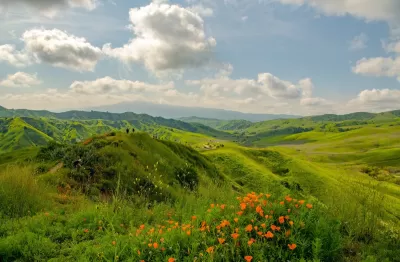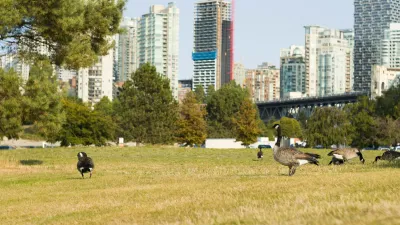A recently released report offers recommendations for keeping state parks healthy and robust, including acquiring additional land for conservation and recreation.

California's State Park System is the largest in the U.S. This system includes 279 separate park units on 1.4 million acres, with more than 280 miles of coastline, 625 miles of lake and river frontage, almost 15,000 campsites, and 3,000 miles of hiking, biking, and equestrian trails. However, these cherished spaces are now increasingly threatened by climate change. For example, ancient sequoia groves are burning in more frequent and severe wildfires, coastal parks are being eroded by rising sea levels and intensifying storms, and endangered species in state parks are losing vital habitat.
As reported by Tara Lynn Wagner, the California State Parks Foundation has just released a 70-page report entitled Building a Climate-Resilient California State Park System. It defines climate-resilient state parks as those which "can prepare for, adapt to, and recover from climate impacts." Specifically, this includes protecting natural and cultural resources, preserving park access, building climate-smart infrastructure, and educating Californians about parks and climate change. Climate-resilient parks also use clean energy and climate-smart land management to mitigate greenhouse gas emissions and contribute to statewide carbon neutrality.
The report offers the following recommendations:
- Rethink California State Parks’ representation in 30x30.
- Fund the full implementation of California State Parks’ Sea Level Rise Adaptation Strategy.
- Authorize and fund permanent climate resilience staff across relevant California State Parks divisions (or program areas or functions) for a multidisciplinary approach to building climate resilience into all aspects of park management.
- Expand California State Parks’ internal capacity to assess and scope adaptation projects.
- Extend funding for California State Parks’ Wildfire and Forest Resilience Program beyond its current expiration in FY 2027–28, including hiring authority for permanent staff positions.
- Establish a pilot program for California state parks as community climate resilience centers.
- Fund a robust California State Parks acquisition program.
For more information, please read the source article and the report.
FULL STORY: California State Parks face threat of climate change — but could also be part of the solution

Planetizen Federal Action Tracker
A weekly monitor of how Trump’s orders and actions are impacting planners and planning in America.

Map: Where Senate Republicans Want to Sell Your Public Lands
For public land advocates, the Senate Republicans’ proposal to sell millions of acres of public land in the West is “the biggest fight of their careers.”

Restaurant Patios Were a Pandemic Win — Why Were They so Hard to Keep?
Social distancing requirements and changes in travel patterns prompted cities to pilot new uses for street and sidewalk space. Then it got complicated.

California Homeless Arrests, Citations Spike After Ruling
An investigation reveals that anti-homeless actions increased up to 500% after Grants Pass v. Johnson — even in cities claiming no policy change.

Albuquerque Route 66 Motels Become Affordable Housing
A $4 million city fund is incentivizing developers to breathe new life into derelict midcentury motels.

DC Area County Eliminates Bus Fares
Montgomery County joins a growing trend of making transit free.
Urban Design for Planners 1: Software Tools
This six-course series explores essential urban design concepts using open source software and equips planners with the tools they need to participate fully in the urban design process.
Planning for Universal Design
Learn the tools for implementing Universal Design in planning regulations.
Heyer Gruel & Associates PA
JM Goldson LLC
Custer County Colorado
City of Camden Redevelopment Agency
City of Astoria
Transportation Research & Education Center (TREC) at Portland State University
Camden Redevelopment Agency
City of Claremont
Municipality of Princeton (NJ)





























